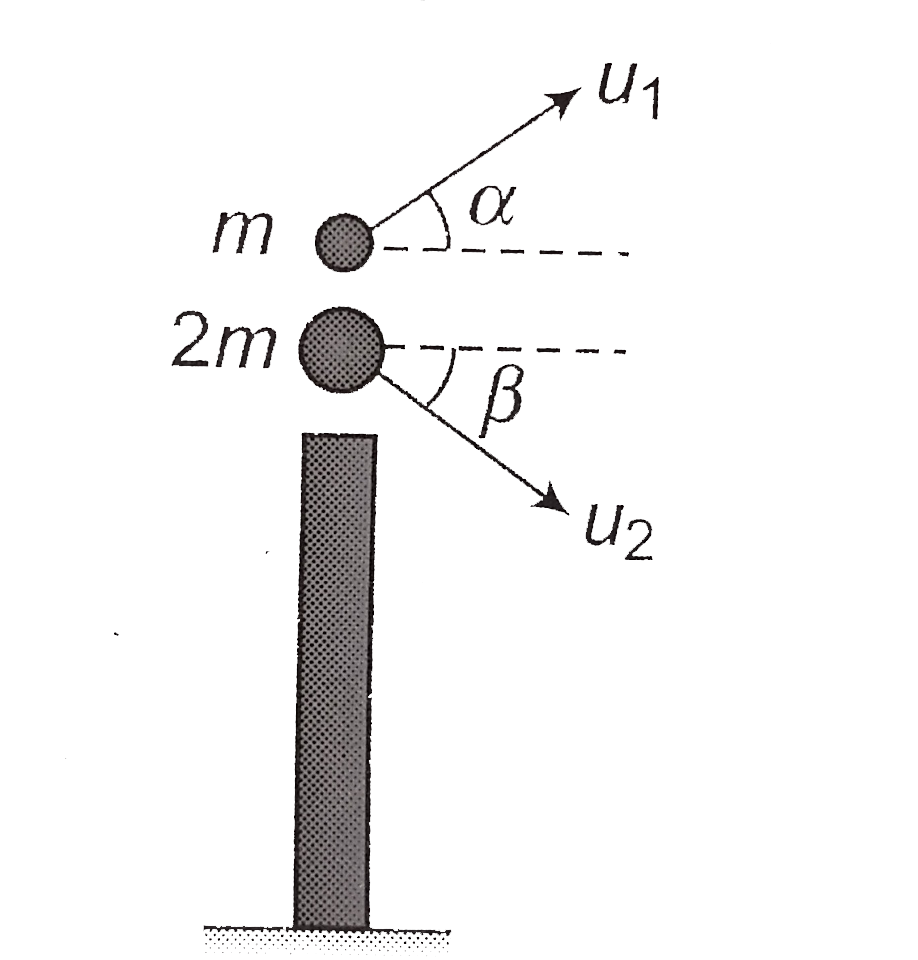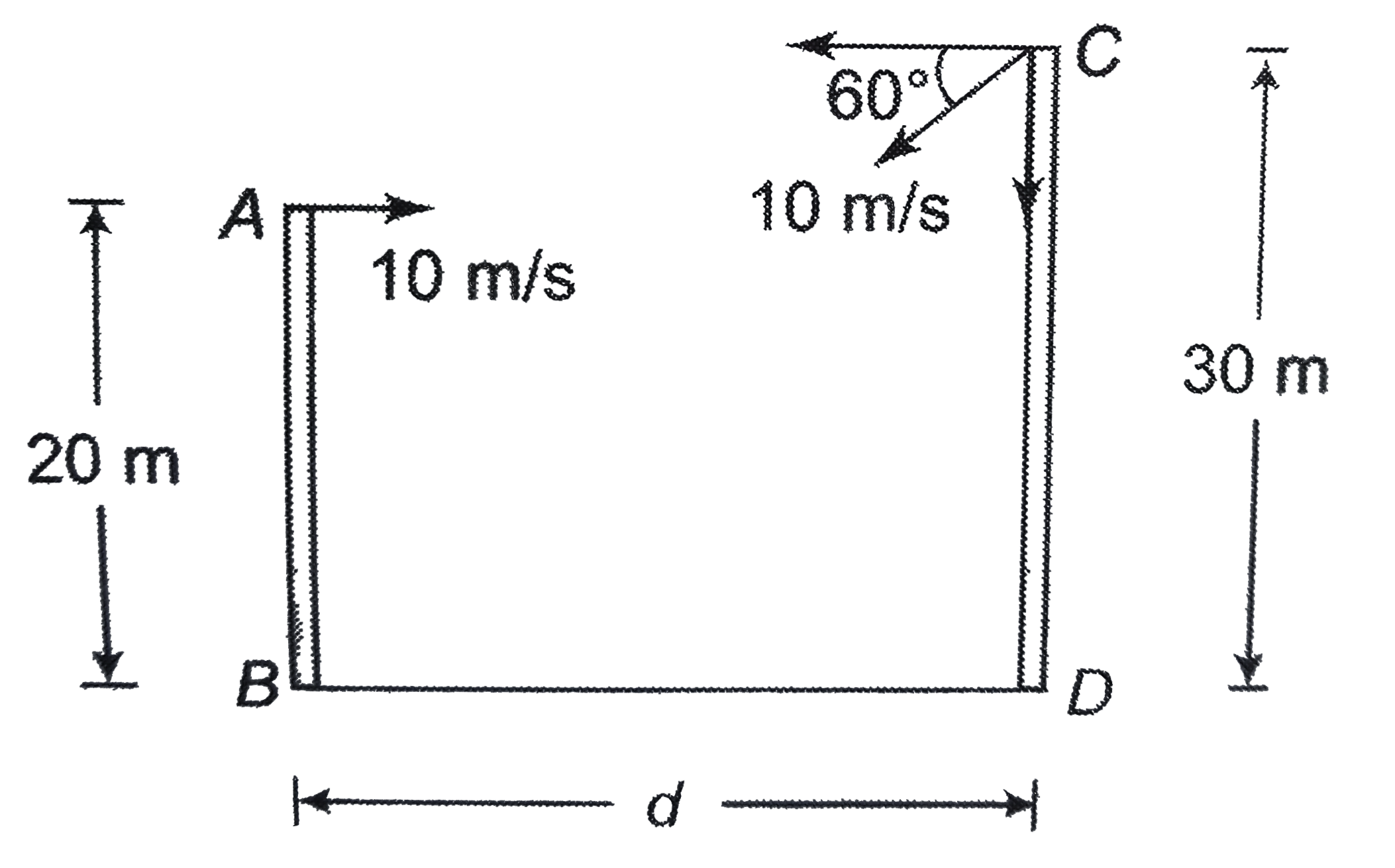Two balls are thrown simultaneously in air. The acceleration of the centre of mass of the two balls while in air
depends on the direction of the motion of the balls
depends on the masses of the two balls
depends on the speeds of the two balls
is equla to g
The correct Answer is:D
Step by step video, text & image solution for Two balls are thrown simultaneously in air. The acceleration of the centre of mass of the two balls while in air by Physics experts to help you in doubts & scoring excellent marks in Class 11 exams.
Updated on:21/07/2023Topper's Solved these Questions
- CENTRE OF MASS, LINEAR MOMENTUM, COLLISIONBOOK - HC VERMACHAPTER - CENTRE OF MASS, LINEAR MOMENTUM, COLLISIONEXERCISE - Exercises
64 Videos
- CENTRE OF MASS, LINEAR MOMENTUM, COLLISIONBOOK - HC VERMACHAPTER - CENTRE OF MASS, LINEAR MOMENTUM, COLLISIONEXERCISE - Objective -1
1 Videos
- CALORIMETRYBOOK - HC VERMACHAPTER - CALORIMETRYEXERCISE - Exercises
18 Videos
- CIRCULAR MOTIONBOOK - HC VERMACHAPTER - CIRCULAR MOTIONEXERCISE - Exercises
30 Videos
Similar Questions
9.Two identical balls are thrown obliquely from the ground simultaneously.The acceleration of centre of mass
A) does not depend on the mass of the two balls B) depends on the direction in which two balls are projected C) is equal to g D) is zero
View SolutionA billiard ball collides elastically with an identical stationary ball. The collision is not head on. Show that the directions of motion of the two balls are at right angles after the collision. Solve the problem in centre of mass frame as well as in lab frame.
View Solution
Knowledge Check
Two particles of different masses are thrown simultaneously in air. Centre of mass of two balls while both are in mid air.
AMove in a straight line independent of initial velocities of particlesBMove in straight line when both the particles are thrown along same vertical lineCHave acceleration equal to gDHave acceleration depending on initial velocities of particlesTwo balls are thrown simultaneously from top of tower in air as shown in the figure.
(i) The acceleration of the center of mass of two balls while in air is equal to g.
(ii) The path followed by the center of mass is parabola.
(iii) The path followed by the center of mass will change if one ball after striking the ground comes to rest.
 A(i),(ii),(iii)B(i),(ii),(iv)C(i),(ii)Dall of the above
A(i),(ii),(iii)B(i),(ii),(iv)C(i),(ii)Dall of the aboveTwo balls of different masses are thrown in air with different velocities. While they are in air acceleration of centre of mass of the system. (neglect air resistance)?
ADepends on the direction of the motion of two ballsBDepends on the masses of the two ballsCDepends on the magnitude of velocities of the two ballsDIs equal to g
Consider the situation as shown in the figure.

Two balls are thrown simultaneously with same speed 10m/s, one horizontally and another at angle 60∘ in downward direction. After sometime balls cllide in mid-air, find distance d.
View SolutionTwo balls of equal mass are projected from a tower simultaneously with equal speeds. One at angle θ above the horizontal and the other at the same angle θ below the horizontal. The path of the center of mass of the two balls is
View SolutionTwo balls A and B of masses 100gm and 250 gm respectively are connected by a stretched spring of negligible mass and placed on a smooth table. When the balls are released simultaneously the initial acceleration of B is 10 cm/sec2 west ward. What is the magnitude and direction of initial acceleration of the ball A-
View SolutionTwo balls of same mass are released simultaneously from heights h & 2h from the ground level. The balls collide with the floor & stick to it. Then the velocity-time graph of centre of mass of the two balls is best represented by :
View SolutionTwo balls A and B of masses 100 gm and 250 gm respectively are connected by a stretched spring of negligible mass and placed on a smooth table. When the balls are released simultaneously the initial acceleration of B is 10 cm/sec2 west ward. What is the magnitude and direction of initial acceleration of the ball A -
View Solution
